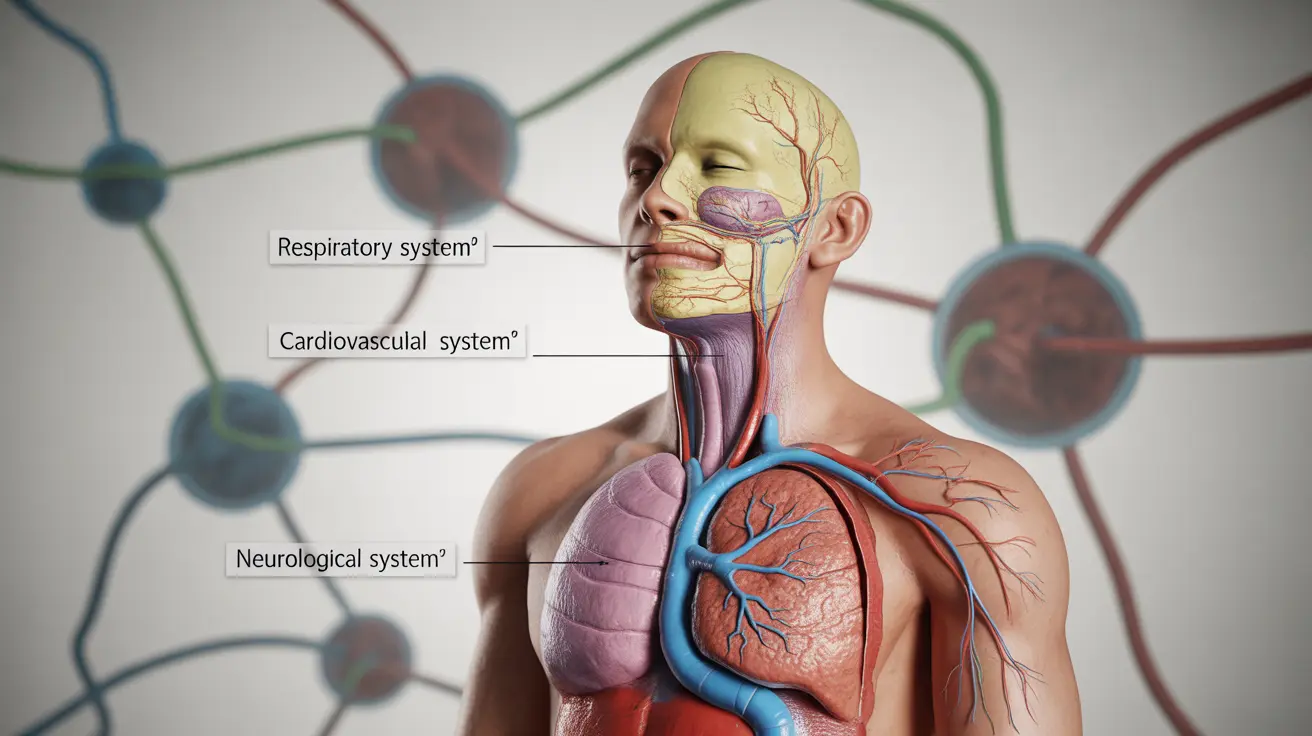Cyanide poisoning represents one of the most serious medical emergencies, requiring immediate recognition and treatment. This life-threatening condition occurs when the body is exposed to cyanide compounds, which interfere with cellular oxygen utilization at the most fundamental level. Understanding what are the symptoms of cyanide poisoning can literally mean the difference between life and death in emergency situations.
While cyanide exposure is relatively rare in everyday life, it's crucial for healthcare professionals, emergency responders, and the general public to recognize the warning signs. Early detection and prompt medical intervention are essential for preventing severe complications and improving survival outcomes.
Early Warning Signs and Initial Symptoms
The initial symptoms of cyanide poisoning can be deceptively mild and often resemble common illnesses, making early detection challenging. The earliest warning signs typically include headaches, dizziness, and general weakness that may develop within minutes to hours of exposure.
Victims may experience nausea and vomiting, which are often dismissed as signs of food poisoning or flu-like illness. Confusion and disorientation frequently accompany these early symptoms, as the brain begins to suffer from impaired oxygen utilization. Mental status changes can range from mild confusion to agitation and anxiety.
Respiratory symptoms emerge early in the progression, with shortness of breath and rapid breathing being prominent features. The body's attempt to compensate for impaired cellular oxygen use results in increased respiratory rate and effort. Chest tightness and difficulty breathing may intensify as the condition progresses.
Cardiovascular and Neurological Manifestations
As cyanide poisoning advances, cardiovascular symptoms become more pronounced and concerning. The heart initially responds by beating faster in an attempt to circulate blood more efficiently. However, as cellular damage progresses, heart rhythm abnormalities may develop.
Blood pressure changes are common, with initial elevation followed by potentially dangerous drops as the cardiovascular system becomes compromised. The skin may appear flushed initially, but this can progress to a characteristic cherry-red coloration, though this classic sign is not always present.
Neurological symptoms intensify as the condition worsens. Seizures may occur as brain cells struggle with impaired oxygen utilization. Loss of consciousness can develop rapidly, particularly in cases of severe acute exposure. Motor coordination becomes impaired, leading to unsteady movements and potential falls.
Acute Versus Chronic Exposure Patterns
Acute cyanide poisoning develops rapidly following significant exposure and presents with severe, life-threatening symptoms within minutes to hours. The progression is typically swift and dramatic, with victims experiencing rapid deterioration from mild symptoms to complete cardiovascular and respiratory collapse.
Chronic cyanide exposure presents differently, with symptoms developing gradually over weeks to months. This pattern is more subtle and may include persistent headaches, fatigue, and weakness that worsen over time. Chronic exposure victims may experience recurring gastrointestinal symptoms, including nausea, vomiting, and abdominal pain.
Long-term exposure can lead to neurological complications, including peripheral neuropathy with numbness and tingling in the extremities. Cognitive impairment may develop gradually, affecting memory, concentration, and decision-making abilities. Thyroid dysfunction is another potential consequence of chronic cyanide exposure.
Advanced Symptoms and Critical Signs
In severe cases, cyanide poisoning progresses to life-threatening complications that require immediate emergency intervention. Severe respiratory distress may progress to complete respiratory failure, requiring mechanical ventilation support. The characteristic rapid, labored breathing becomes increasingly ineffective.
Cardiovascular collapse represents the most critical stage, with profound drops in blood pressure and heart rhythm disturbances that can lead to cardiac arrest. The pulse may become weak and irregular before potentially stopping altogether.
Coma and complete loss of consciousness indicate severe brain involvement and represent a medical emergency requiring immediate intensive care. Body temperature regulation may become impaired, leading to dangerous fluctuations in core temperature.
Recognition in Different Age Groups
Children and infants may present with different symptom patterns compared to adults. Pediatric victims often show more rapid symptom progression and may exhibit crying, irritability, and feeding difficulties as early signs. Developmental delays or regression may occur with chronic exposure in young children.
Elderly individuals may experience more subtle initial symptoms, with confusion and weakness being predominant features. Pre-existing medical conditions can complicate symptom recognition and mask the true cause of their deterioration.
Pregnant women require special consideration, as cyanide can cross the placental barrier and affect fetal development. Symptoms in pregnancy may be complicated by normal pregnancy-related changes, making recognition more challenging.
Environmental and Occupational Considerations
Certain occupational settings present higher risks for cyanide exposure, including metal processing, photography, and chemical manufacturing industries. Workers in these environments should be particularly aware of potential symptoms and have emergency protocols in place.
House fires represent a significant source of cyanide exposure through smoke inhalation from burning synthetic materials. Fire victims showing unusual symptom patterns should be evaluated for possible cyanide poisoning in addition to carbon monoxide exposure.
Agricultural workers may encounter cyanide compounds in certain pesticides and fertilizers. Proper protective equipment and awareness of symptoms can prevent serious exposure incidents in these settings.
Frequently Asked Questions
What are the common early symptoms of cyanide poisoning to watch for?
The earliest symptoms typically include headache, dizziness, nausea, vomiting, and general weakness. Mental confusion, anxiety, and shortness of breath are also common initial signs. These symptoms can appear deceptively mild and may be mistaken for common illnesses, making early recognition challenging but critically important.
How quickly do symptoms of cyanide poisoning appear after exposure?
Symptoms can appear within minutes to a few hours after exposure, depending on the amount and method of exposure. Inhalation typically causes the fastest onset, with symptoms developing within minutes. Ingestion may take 30 minutes to several hours for symptoms to manifest, while skin absorption generally results in slower symptom development.
What are the differences between acute and chronic cyanide poisoning symptoms?
Acute poisoning develops rapidly with severe symptoms including difficulty breathing, rapid heart rate, seizures, and potential loss of consciousness within hours. Chronic exposure causes gradual onset symptoms over weeks to months, including persistent headaches, fatigue, weakness, recurring nausea, and potential neurological complications like numbness and memory problems.
What should I do if I suspect someone has cyanide poisoning?
Immediately call emergency services (911) and remove the person from the exposure source if safe to do so. Do not attempt mouth-to-mouth resuscitation. Keep the victim calm and lying down, monitor breathing and consciousness, and provide any exposure information to emergency responders. Time is critical, so professional medical intervention must begin as soon as possible.
Can mild symptoms like headache and nausea indicate cyanide exposure?
Yes, mild symptoms such as headache and nausea can be early indicators of cyanide exposure, especially when accompanied by dizziness, weakness, or confusion. These seemingly minor symptoms should not be ignored, particularly in high-risk environments or following potential exposure incidents. Early recognition and medical evaluation are essential for proper diagnosis and treatment.




